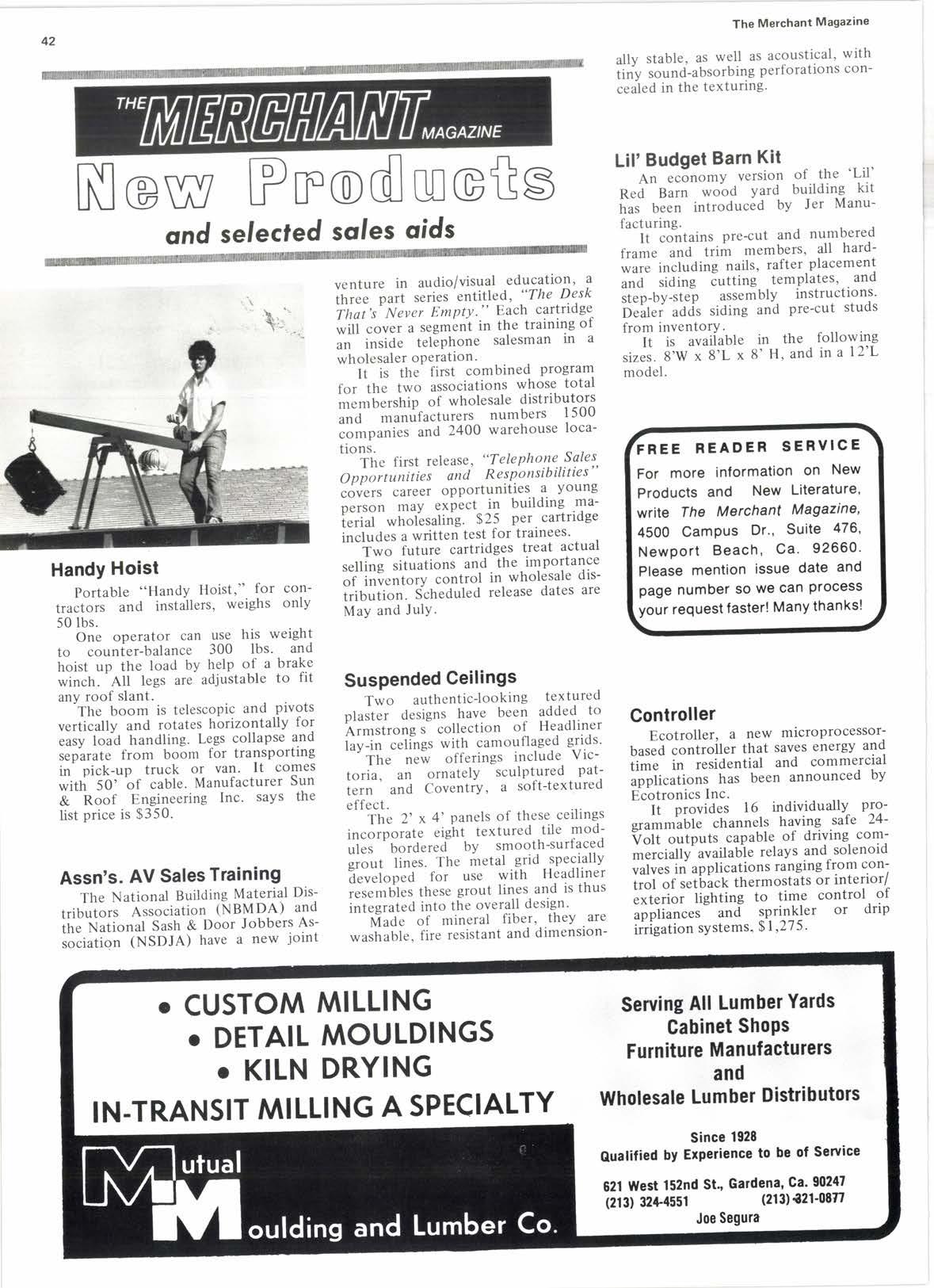
2 minute read
Lumber distribution patterns changing
Lumber production in the l2 contiguous western states totaled 18,479,000,000 board feet in 1977, an increase of 2% over the previous year, according to year-end statistics announced by the Western Wood Products Association.
The Western output figures, which do not include redwood, comprised more than half of the nation's 1977 total production of 3l billion board feet, up 3.4% from 1976.
"lt's a direct result of the housing boom and overall demand for the renewable resource of America's forests," reported A. M. Whiting, WWPA's president. Besides heading the largest of all lumber producers' trade groups, Whiting is chairman of the board and president of Kaibab Industries, Phoenix, Arizona.
Production in the Inland western wood producing region was up 2.6% over 1916 to 10,042,000,000 board feet. The Coastal producing region of the Pacific Northwest, lying West of the Cascade Range, increased production 1.4% to 8,437,000,000 board feet,
In the Redwood Region, production dropped 2.3% Io 2,453,000,000 b.f. "This can be attributed to the federal set-asides," Whiting said.
The Southern Pine region, in one of the strongest regional markets in the U.S., experienced an 8.67o rise in production to 8,224,000,000 b.f.
A "significant reason" for higher softwood production was the increase in private housing starts; up 29.2% to 1,986,400 starts. The leading geo- graphic region for housing starts was the South with 782,800 starts, up 37.7%. Starts advanced 34.4Vo in the West to total 536,900. The North Central United States experienced a rise of 16.4% to 465,600 starts and the Northeast followed the trend increasing 189% over 19'16 to 201,100 housing starts.
Douglas Fir accounted for most of the production in the Coast Region, over 5,521,000,000 b.f. cut. Hemlock production was 2,026,000,000 b.f., and white fir and other species accounted for just under 900,000,000 b.f.
In the Inland Region, Ponderosa pine advanced 2.6% over 1976 to 3,854,000,000 b.f. The combined production of Douglas fir and larch was up to 2,383,000,000 bf., withwhite fir and other species accounting for 3,805,000,000 b.f.
Most of the lumber shipped from the Inland Region by rail or truck went to Western states. Overall, shipments to the West increased 16.6% to 5,428,000 b.f. over the previous year. Shipments to the North Central states totaled 2,447,000,000 b.f ., down 12.6% ftom 1976. Whiting attributed this to rising shipping costs and stiff competition from Canadian producers.
Shipments into the South from the Inland Region, with more favorable shipping costs, increased 3.2% to 1,406,000,000 b.f. However, shipments to the faraway Northeastern states accounted for only 593,000,000 b.f., a drop of 20.3%ftom 1976.'"that is a sign of a continuing trend in lum- ber shipping destination patterns," Whiting noted.
Story at a Glance
The West produced more than half the U.S. total lumber production in '77, up 3.4% at 31 billion board feet every region in the West was up except redwood, which declined due to federal set-asides more lumber produced in the West is being sold in the West.
Shipments to the West from the Coast Region advanced 18.4% over 1976 to 5,107,000,000 b.f. Although shipments to the North Central states totaled 1,003,000,000 b.f., this was down 25.5% from 1976. Coastal lumber shipped East was 216,000,000 b.f., down 22.Wo. Shipments to the South remained almost the same as last year at 966,000,000 b.f.
Total cargo shipments of lumber from the Coast Region decreased 15.6% to 809,000,000 b.f. Export markets contributed to the overall decline, dropping 35.1% to 263,000,000 b.f. Cargo shipments to the West Coast were up 5.1% to 476,000,000 b.f. Shipments to the East Coast dropped 53.7% to 25,000,000 b.f. and shipments offshore remained relatively stable at 45,000,000 b.f.










